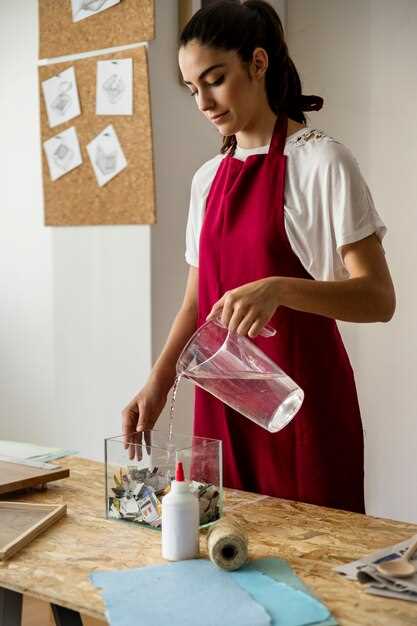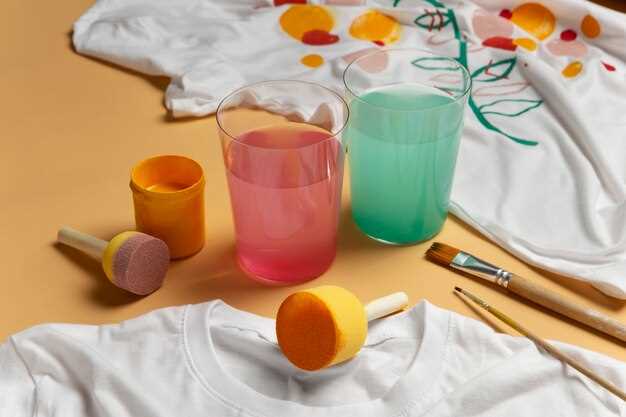Transforming ordinary clear materials into stunning works of beauty captivates many enthusiasts. Every stroke, every pattern reveals a unique story. This fascinating practice combines precision with creativity. It invites individuals to express their personalities and emotions in new forms. Are you ready to dive into this intriguing journey?
From simple designs to intricate details, the possibilities abound. Tools and methods vary, allowing for a wide range of outcomes. Whether aiming for elegance or bold statements, this craft offers something for everyone. With a bit of patience and the right mindset, stunning results can emerge.
Exploring various approaches unveils a canvas full of endless opportunities. Each session becomes an adventure filled with experimentation. Those who embark on this path often discover techniques that resonate with their unique styles. Additionally, connecting with fellow creators enriches one’s experience, fostering inspiration and camaraderie among like-minded individuals.
In the following sections, we will delve deeper into practical methods that enhance skills and ignite imaginations. From selecting the ideal tools to understanding patterns, this journey promises insights and revelations. Each idea builds upon the last, crafting a comprehensive understanding of this delicate yet powerful practice.
The Art of Glass Etching: Techniques and Tips
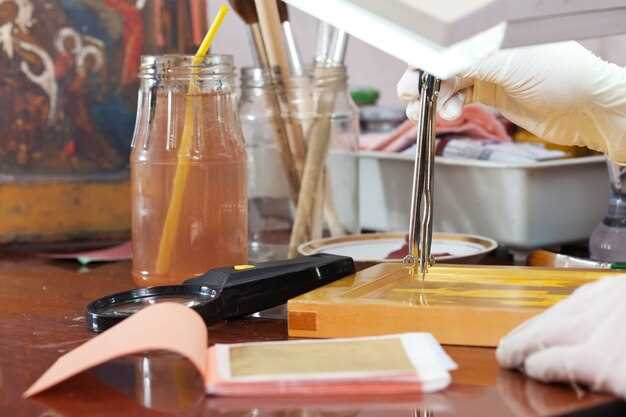
Engaging with materials opens up a realm of possibilities. Transforming surfaces allows for unique expressions. This process combines precision with creativity. It’s not just about the final piece; it’s about discovery.
First, prepare your working area. Safety goggles and gloves are essential. A clean, spacious workspace minimizes errors. Gather all necessary tools: etching cream, stencils, and brushes. Consider experimenting with different patterns or designs to find your style.
Application of etching cream requires attention. Apply with care, ensuring even coverage. Allow adequate time for the product to react. Rinse thoroughly to reveal stunning results. Each session can yield surprising outcomes, motivating further experimentation.
Keep experimenting with various techniques; layering, masking, and shading can add depth. Explore the potential of combining colors with etching for a more striking effect. Play around with different types of glass, as each offers its own unique characteristics.
Remember, practice leads to improvement. Don’t be discouraged by initial challenges. Every expert once faced obstacles. Learn from each attempt, refining your skills over time, leading to more sophisticated and intricate designs.
Understanding Glass Etching Techniques
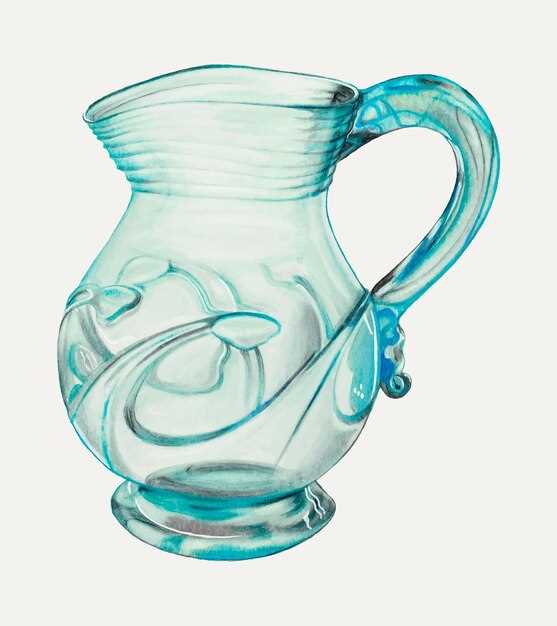
Creating intricate designs on transparent surfaces requires knowledge and practice. Various methods enable artists to achieve stunning effects. Each approach has unique characteristics, appealing to different preferences. Mastering these approaches opens doors to endless possibilities.
One popular method involves using chemical solutions to create frosted finishes. This technique allows for precision and delicate results. Another option is sandblasting, which provides a more textured appearance. Artists can manipulate pressure and distance for varied outcomes.
Stencils play a crucial role in achieving accuracy, serving as guides for patterns. They can be crafted from adhesive materials, vinyl, or even paper, making them versatile for various projects. Combining multiple methods can produce layered effects that add depth.
Successful outcomes often depend on selecting appropriate tools. For chemical techniques, safety gear is essential. Sandblasting requires a well-ventilated workspace to protect against inhalation of particles. Understanding the equipment enhances the overall experience, allowing for greater creativity during the process.
Ultimately, exploring differs techniques expands artistic horizons, fostering personal expression. By experimenting and integrating various styles, one can develop a distinctive voice in their creations. Approaching this craft with an open mind ensures continual growth and innovation.
Types of Etching Methods
When exploring the fascinating world of surface decoration, various approaches stand out. Each technique offers unique possibilities, allowing for personal expression and creativity. The selection can greatly influence the final appearance of crafted pieces. Whether for beginners or seasoned artisans, understanding different methods is vital.
Some common practices include sandblasting, acid, and laser engraving. Sandblasting involves directing abrasive particles at the surface, creating textured designs. Acid techniques use chemical reactions to achieve intricate details, while laser engravers employ high-precision technology for fine lines. Each method comes with its own set of advantages and challenges.
Experimentation can lead to stunning results, making it essential to test different styles. Combining various approaches often yields truly special effects, enriching the overall aesthetic. Finding the right combination may take time but can result in breathtaking creations.
Tools You Need for Success
Every project requires the right instruments for achieving desired results. Having essential supplies can significantly impact your work quality. With suitable items at your disposal, possibilities become endless. Preparation and organization can enhance your experience tremendously. When you invest in the right tools, creativity flows seamlessly.
First and foremost, consider getting a sturdy working surface. A spacious desk can make a world of difference. Moreover, protective gloves are crucial for safety. They shield your hands from various substances involved in the process. A well-lit area helps illuminate every angle, ensuring precision during your undertaking.
Next, gather specific implements tailored for your tasks. A set of carving knives will be necessary for detail work. Each utensil serves a unique purpose, offering versatility. Use an etching cream or acid for deeper designs on the surface. Additionally, stencils can provide inspiration and facilitate complex patterns easily.
Once the foundational tools are in place, consider organizing them efficiently. A dedicated toolbox ensures everything remains accessible and tidy. Use a table to keep track of what’s needed. Below is a quick reference for key instruments you’ll find beneficial:
| Tool | Purpose |
|---|---|
| Carving Knives | For detailed designs and patterns. |
| Protective Gloves | To keep hands safe from chemicals. |
| Etching Cream | For creating deeper designs. |
| Stencils | To help with consistent patterns. |
| Workbench | A sturdy surface for your projects. |
Ultimately, a balance between quality and functionality leads to success. Embrace the process, experiment with every tool, and uncover unique potential. With each piece, you’ll find new pathways to explore, making your work truly personalized and inspiring.
Safety Precautions to Keep in Mind
When engaging in activities involving delicate surfaces, safety must take priority. Understanding potential risks helps ensure a secure and enjoyable experience. It’s vital to recognize hazards often overlooked. Chain reactions can lead to unfortunate incidents. Always stay aware of your surroundings and materials.
Follow these essential guidelines for a safe environment:
- Wear appropriate protective gear.
- Use well-ventilated areas.
- Avoid direct contact with harsh materials.
- Keep tools organized and within reach.
- Store materials securely when not in use.
Maintain a clean workspace to prevent accidents; clutter can cause tools to slip or materials to spill, which subsequently may result in frustration or injury, distracting from your artistic endeavor.
Illumination is equally important, as a well-lit area enables one to identify risks quickly and reduces mistakes made during intricate processes. Remember to disengage from distractions, as phone notifications or loud music can lead to lapses in focus.
Lastly, always read labels and safety data sheets for any products used, ensuring full awareness of possible reactions, toxicity, or necessary first-aid measures. Being proactive in planning for potential issues provides peace of mind and fosters a more enjoyable creative process.
Preparing Your Workspace for Etching
Creating an efficient and safe environment is crucial for successful work. A well-organized space fosters creativity and minimizes distractions. It sets the stage for your project, ensuring everything you need is at your fingertips. Prioritizing cleanliness is key, as it helps in sustaining focus. Proper arrangement of tools and materials can significantly boost your productivity.
Before diving into your project, consider these essential steps:
- Choose a well-ventilated area to prevent inhalation of harmful fumes.
- Gather all necessary materials, such as etching cream, brushes, and stencils.
- Protect surfaces with newspapers or plastic to avoid accidental spills.
- Ensure you have proper lighting to accurately see your work.
- Keep safety gear like gloves and goggles readily available for use.
While preparing may seem tedious, investing time into organizing and ensuring safety will ultimately enhance your overall experience; with everything neatly laid out and easily accessible, you can focus entirely on bringing your creative vision to life without any hindrances that might disrupt your flow or inspire uncertainty.
Creative Inspiration for Your Glass Projects
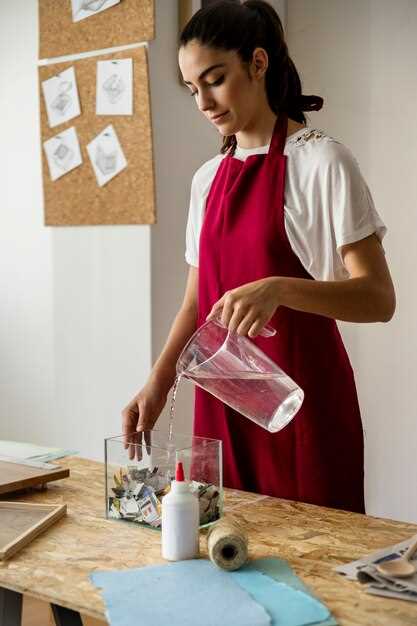
Every crafted piece offers a gateway to unleash your imagination. Whether designing for yourself or creating gifts, finding unique ideas can elevate your work. Inspiration can come from anywhere: nature, architecture, or even everyday objects. It’s about seeing the world through a different lens.
Consider seasonal themes, such as autumn leaves or spring blooms. These natural motifs can bring warmth and vibrancy to your creations. Additionally, think about cultural elements that resonate with you. Patterns, colors, and symbols from various cultures can enhance your designs. Experimentation with these influences can spark new creative paths.
Collaborating with fellow artists can also ignite fresh perspectives. Sharing thoughts stimulates innovation and growth. Engaging in workshops opens up networks, introducing new techniques that inspire change. Stepping outside your comfort zone often leads to unexpected breakthroughs.
Visit local galleries or craft fairs to see what others are doing. These spaces brim with ideas and the energy of creativity. Observe details that catch your eye and consider how you could adapt them. Taking photos can help capture fleeting inspirations.
Don’t forget about functionality; practical pieces can be just as artistic. Think of everyday uses, like tableware or decorative items. Combining usefulness with aesthetic appeal often leads to delightful results. Your imagination is the only limit.
Ultimately, inspiration arises from within as much as from without. Let your personal experiences and emotions guide you. Each piece you create becomes not just an object but a story waiting to be told. Embrace the journey, and don’t shy away from chasing bold opportunities.
Exploring Innovative Design Ideas
Unleashing creativity can lead to exciting and unexpected results. Inspiration often strikes in the most unusual places. It’s about pushing boundaries and reimagining traditional concepts. Original designs can transform everyday objects into stunning visuals.
Consider varying styles and motifs. Each piece can tell a unique story. Explore combinations of patterns and textures. Experimentation is key, and the possibilities are endless.
- Geometric shapes add modern flair.
- Nature-inspired designs evoke tranquility and beauty.
- Abstract patterns spark curiosity and conversation.
- Personalized imagery makes items truly one-of-a-kind.
By blending diverse influences, you can create something that resonates on multiple levels; whether it be through a harmonious color palette or an intricate layout, each detail contributes to the overall impact of the finished work.
- Take a walk in the park for organic ideas.
- Visit local galleries for artistic fuel.
- Look at different cultures for unique motifs.
Meeting diverse inspirations while allowing spontaneity guides the crafting process toward remarkable outcomes that captivate and inspire those who encounter them.
Finding Mindfulness in Glass Arts
Engaging in creative pursuits offers a pathway to tranquility. When immersed in creating delicate designs, one can experience a profound sense of presence. Each moment spent shaping materials invites reflection and awareness. These activities encourage focus and an escape from daily distractions.
Carving and embellishing transparent surfaces promotes a meditative state where time can feel suspended. As attention shifts to intricate details, the mind often struggles less with clutter, surrendering to the task at hand. The rhythm of movements becomes a gentle dance, fostering inner peace.
Practitioners often find joy in the process as they explore their surroundings through a new lens. Each stroke unveils a different perspective, showcasing the beauty hidden within common objects. This transformative experience enriches both the creator and the observer.
Below is a simple table highlighting some mindful practices associated with engaging in this craft:
| Practice | Benefit |
|---|---|
| Breath Awareness | Enhances relaxation during creation |
| Focused Attention | Improves concentration on intricate details |
| Sensory Engagement | Heightens appreciation for material textures |
| Reflective Journaling | Documents emotional responses to the process |
Such practices cultivate a deeper connection to oneself while expressing individuality. Exploring creativity in this manner allows for realignment with personal values. In essence, activities centered around manipulating surfaces not only yield aesthetically pleasing results but also contribute positively to mental well-being.
Showcasing Your Etched Creations
Presenting your unique pieces can elevate appreciation and inspire others. Each item tells a story, radiating personality and creativity. It’s essential to curate a display that reflects your style. Consider the atmosphere you wish to convey. Whether in a gallery setting or at home, your work deserves attention.
Displaying creations doesn’t just stop at surfaces. Think about lighting. Soft glows enhance details, making peaks of artistry shimmer. Arranging pieces can create a flow, guiding the viewer’s eye seamlessly. Consider using stands or frames that complement rather than overshadow your work, as this can transform mundane presentations into captivating exhibits.
Collaboration also plays a pivotal role in showcasing talents. Engage with local artisans or participate in community events to broaden visibility. Social media platforms serve as excellent avenues to share progress and finished results. Through these interactions, feedback will nurture growth and innovation.
Don’t forget about storytelling! Pairing stories with each creation can deepen connections with viewers. Describe your inspiration, the process involved, or the emotions evoked by the piece. This narrative not only captivates but also invites others to become part of your creative journey.
Ultimately, the way you highlight your work significantly impacts how it resonates with others. Consider personal touchpoints, maintain a cohesive theme, and always be confident in what you present. Your creations deserve to shine and share their beauty with the world.
Video:
How to Etch Glass : What Is Glass Etching?
How to Etch Glass : What Is Glass Etching? by ExpertVillage Leaf Group 24,369 views 16 years ago 1 minute, 29 seconds
Q&A:
What is glass etching and how is it done?
Glass etching is a decorative technique that involves creating designs on the surface of glass through a process that roughens the glass surface, typically using acid or sandblasting. To etch glass, you can use various techniques such as using etching cream, a sandblaster, or even a Dremel tool with diamond bits. The process often begins with applying a stencil or masking tape to the glass surface, which protects certain areas from being etched. After applying the etching medium, the glass is left to sit for a specific amount of time before being rinsed to reveal the design. This technique can create beautiful, frosted images and patterns that enhance the aesthetic appeal of glass objects.
What materials do I need for a basic glass etching project?
For a basic glass etching project, you will need a few essential materials: first, a piece of glass that you want to etch, such as a glass vase or window. You’ll also need an etching cream or a sandblasting kit, depending on your preferred method of etching. Stencils or adhesive vinyl can be used for designs, along with masking tape to protect the areas you don’t want to etch. Additionally, gloves should be worn to protect your hands, and safety goggles are recommended to shield your eyes from any splashes or debris during the process. Lastly, a small brush or spatula can be useful for applying the etching cream if you choose that technique.
Can I use glass etching techniques on colored glass or only on clear glass?
You can use glass etching techniques on both clear and colored glass, but the results may vary. Etching on clear glass typically produces a frosty and visually striking effect, while etching on colored glass can create a more subtle variation of shades. When etching colored glass, the etched areas will often appear lighter than the original color, creating a contrast. However, the outcome can depend on the opacity and hue of the colored glass. Some techniques may also work better than others depending on the glass type, so it’s advisable to test on a small piece first to see how the etching medium interacts with that specific glass color.
What are some creative ideas for glass etching projects?
There are countless creative possibilities when it comes to glass etching projects! You can etch personalized gifts like custom glassware (such as beer mugs or wine glasses) with monograms or names for weddings and special occasions. Other ideas include creating decorative glass panels for windows or doors featuring floral designs or geometric patterns. You could also use glass etching for functional art, like adding etched designs to mirror surfaces which can serve as both decor and a statement piece. For a more playful approach, consider etching picture frames with quotes or patterns that reflect the personality of the art displayed within. The only limit is your imagination, so feel free to experiment with different shapes, themes, and surfaces!
Are there any safety precautions I should take while etching glass?
Yes, safety is paramount when etching glass, as the materials and methods involved can be hazardous. First, always wear protective gloves to safeguard your skin from potential irritation caused by etching creams, which contain caustic substances. Safety goggles are also highly recommended to protect your eyes from splashes or flying particles, especially if you’re sandblasting. Additionally, it’s best to work in a well-ventilated area to minimize inhalation of any fumes or dust created during the etching process. If you’re using a Dremel tool or other power tools, ensure you follow the manufacturer’s instructions carefully to avoid accidents and injuries. Lastly, keep your workspace organized and free of distractions to maintain focus and further ensure safety during your project.
What are the essential tools and materials needed for glass etching?
To start glass etching, you will need several essential tools and materials. First, you will require glass items to etch, like glasses, vases, or mirrors. For the etching process, you will need an etching cream or a sandblasting kit, depending on the technique you choose. You’ll also need a stencil for your design; this can be made from adhesive vinyl, masking tape, or even paper. A craft knife or scissors will help you cut out the stencil. Additionally, supplies like gloves to protect your hands, safety goggles to shield your eyes, and a soft cloth for cleaning the glass before etching are recommended. Finally, a well-ventilated working area is essential to ensure safety when working with chemicals.
